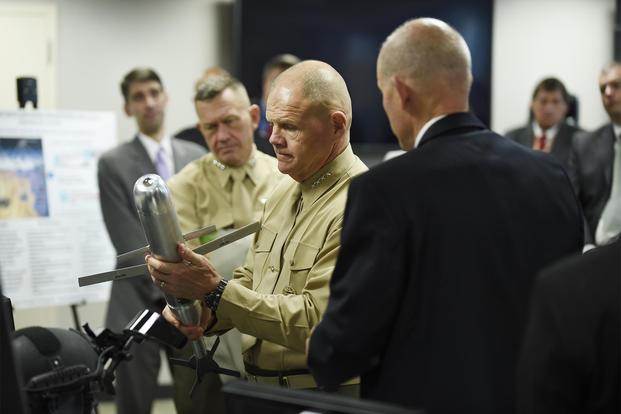The Marine Corps is investing heavily in long-range fire systems as it prepares itself for future battles.
It's a capability gap that Marine Corps leaders have spoken about publicly in recent months. At the Surface Navy Association's annual symposium in January, the head of Marine Corps Plans, Policies and Operations, Lt. Gen. Brian Beaudreault, talked about how the service planned to increase the precision and range of its existing systems in ways tailored to the Corps' main mission sets.
"We're going to very much follow what the Army is doing ... [but maintain] our interest and how we can help in the sea control fight," he said, according to a report from National Defense Magazine.
On the Marine Corps' current wishlist is an 81mm mortar round that can fire up to almost four times further than its existing high-explosive round.
In a request for information published earlier this month, the Marine Corps announced it was "analyzing market capabilities" to find a maker for the Advanced Capability Extended Range Mortar, or ACERM. The round, which would be compatible with existing Marine Corps and Army M252 81mm smooth-bore mortar systems, would have an effective range of up to 20,000 meters, or 12.4 miles.
"In support of the Infantry close fight, across the spectrum of the Full Range of Military Operations, and in all terrain and weather conditions, this capability should be reliable, responsive, and able to defeat high payoff targets," the RFI reads. "This capability includes incapacitating personnel within or behind structural barriers, inside light-skinned stationary vehicles, and in the open while minimizing collateral damage."
The ACERM has been a project under development by the Office of Naval Research for several years. But the new solicitation is an indicator that it's about to transition from a bright idea into a battlefield reality.
According to the solicitation, parameters for the high-tech round include a target accuracy of as little as one meter. The maximum objective range of 20,000 meters is almost quadruple the high-explosive round's maximum range of less than 6,000 meters.
And the round should take only five minutes to travel that 12-mile maximum range, according to the document.
The ACERM should be able to operate in a GPS-denied environment, and have the ability to hit a moving target as well as a stationary one.
Companies have until May 4 to respond to the solicitation; it's not immediately clear what next steps would be to buy or field the high-tech round.
Meanwhile, the service continues to explore other weapons system upgrades, including firing High-Mobility Artillery Rocket Systems (HIMARS) off of amphibious ships and extending the range of larger artillery systems.
-- Hope Hodge Seck can be reached at hope.seck@military.com. Follow her on Twitter at @HopeSeck.










